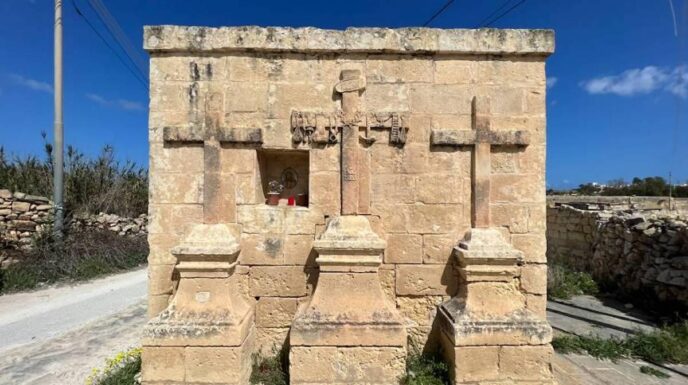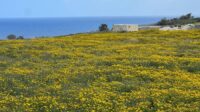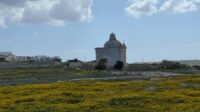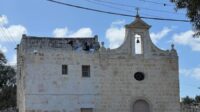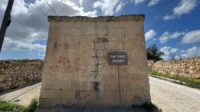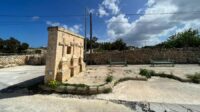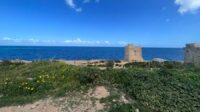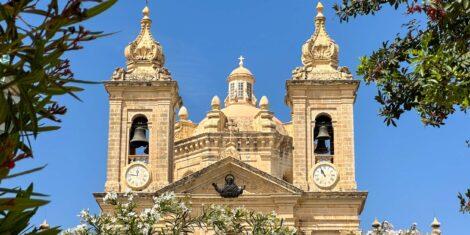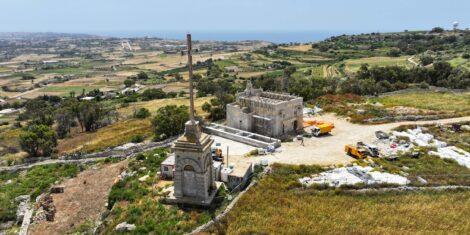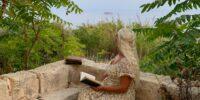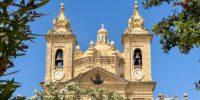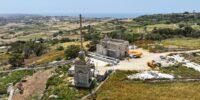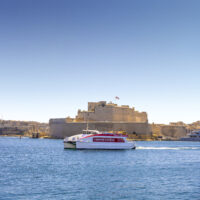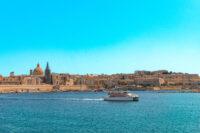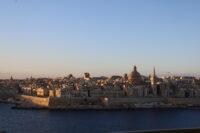There is certainly no lack of monuments on the Maltese islands. Nor is there a lack of mysteries. Yet it is strange to find one that has no documented significance. In the southern part of the country, in between the towns of Żabbar and Żejtun, there is a monument whose origins are unknown. It stands there, waiting to be deciphered as time goes by. That monument is called the Three Crosses.
The location of the Crosses
To locate the crosses, you need to drive to Żabbar, and then take Triq Wied Il-Għajn to Marsascala. You’d then need to take the third right to Triq il-Bidni, where you will eventually come across the monument.
The Three Crosses
The monument is what looks like a piece of a wall, with three big crosses sculpted on it. There are some symbols on the one in the middle. This middle cross is slightly bigger than the outer ones. Possibly, this suggests a potential nod towards the crucifixion of Jesus next to the two thieves. Then again, this is just speculation.
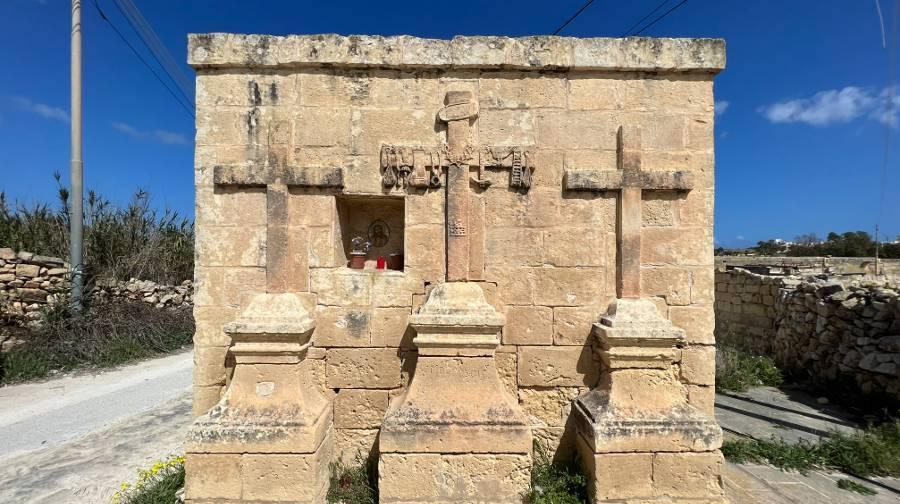
Symbols on the Middle Cross
All the symbols etched on the cross in the middle have some connection to the passion.
- The Whip (featured twice for some unknown reason)
- The Sponge which was used to quench the thirst of Jesus
- The Roman Spear
- The Column used for the 39 lashes
- The Pincers for the aftermath
- The Chain in which Jesus was bound the night before
- The Hammer
- The Rooster that crowed when Peter denied knowing Jesus
- The Ladder
- Another symbol which might be the chalice used in the last supper but it is slightly unclear.
Theories on the Origin of the Crosses
Like any other mystery, the origin of the Three Crosses has fueled some debate. And from this debate a series of theories have emerged.
A Town Marker
What we now know as Żejtun used to be even bigger around the 16th/17th centuries. Soon, the population in some of its areas increased by enough people for them to declare it as a separate town. These two places became Marsascala and Żabbar.
The theory suggests that the monument was essentially erected to show the limits of Żabbar and Żejtun, and indicate the start of the Marsascala area.
One reason why this theory is doubted is the fact that the two ‘new’ parishes came about in 1615, yet on the monument the only date engraved is that of 1899 (in roman numerals). Could this be the date of a restoration? Or could it negate any relation of the monument to this theory?
A Monument To Three Monks
Some believe that the monument was made in honor of three monks who were murdered by Turks and were supposedly buried in the area.
This theory, along with the remaining ones, seem to be a bit weaker and have that certain flare of ‘legend’. This is probably what makes them more interesting. At the same time there’s not much information about these tales, and it seems that they were passed on, primarily through word of mouth.
A Monument to a Victim of the Plague
There is also the belief that the people of Żejtun erected this monument in honor of a Maltese local who died of the plague, or in honor of the victims of the plague.
If we consider the dates connected to this monument, this could have been either the plague of the early 19th century, or the harsher epidemic of the 17th century which killed a quarter of the population.
The Resurrected Man
The last and weirdest theory suggests that a local hermit living in the vicinity of the area died and was buried by the locals. Still, this wasn’t the end.
The story goes that he resurrected from the dead; and not once, but three times.
These theories, especially this last one, really sums up the enigma behind this monument. Whether it’s a resurrected local or three murdered monks, the monument’s origin is only the more interesting as a mystery.
